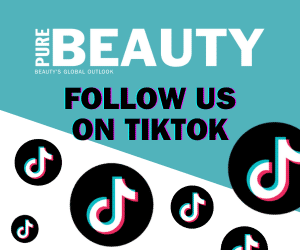Global trends get more local
By 2025 50 per cent of the US population may be multi-cultural, Tonie Leatherberry, a principal with Deloitte Consulting LLP, told an audience of beauty executives in New York recently.
By 2025 50 per cent of the US population may be multi-cultural, Tonie Leatherberry, a principal with Deloitte Consulting LLP, told an audience of beauty executives in New York recently. The keynote speaker at a symposium on the impact of diversity and globalization on the industry sponsored by the Fashion Institute of Technology used the data point to present a business case for workplace diversity.
"Minorities will be the new majority," declared Leatherberry. When companies have a team reflective of your consumer base, added Leatherberry, "you will be more innovative" and better able to "connect" with customers.
Nicholas Gavrelis, vice president, global product development for MAC, said some of its products have already been driven by global trends, like its recently launched Natural Radiance, a skin prep and primer in one that offers optical brightening, a benefit drawn from Asian whitening products. Sales are exceeding expectations with a 78 per cent sell through in only a month and a half.
"As the world gets smaller, so do the trends," said Gravrelis, recounting a spike in sales of its MAC Snob lipstick after it was worn by a novella actress in Latin America and then written about by a blogger.
Gavrelis said his parent company, Estee Lauder, encourages immersion in a market if there is an issue or problem that can't be solved at headquarters. It is "boots on," said Gavrelis. "Buy a ticket and get there."
Unilever executives are now debating how to handle several ethnic hair care brands that entered its portfolio with its acquisition of Alberto Culver last year. They are looking at what to keep, what to merge and what voids need to be filled, according to Cheryl Wilson, Unilever's director of global business development, ethnic hair care. But even more importantly, the company is looking to shift how it presents these products to consumers of kinky, curly and wavy hair types. "We want to take concentration off ethnic and make it about hair textures," said Wilson. "Our products are need-based, not skin colour based." Thus, a packaging update with new explanations could be underway. She added that a handful of retailers are beginning to merchandise the category differently too, such as Ricky's and Target.
Alexandra Fritsch-Gil, marketing manager, Bumble and bumble, also an Estee Lauder company, believes beauty ideals will change as demographics change and consumers are impacted by global influences. Marketers like herself are ready to respond. "Marketers used to need a good emotional IQ and business IQ, now they need a cultural IQ," she said.
Possessing a cultural IQ can mean more than product development and marketing but how companies work with communities around the world.
Mark Davis, director, community and ethnical trade, The Body Shop Intl. said when acquired by L'Oreal there was a fear its natural-ingredient based formulas and community involvement activities would be stifled. Fortunately, he said, instead they received "French rigour" and became more formalised.
The Body Shop currently sources 25 ingredients from 21 markets, and counseled others that "if you are going to go and take their ideas (and products), you have to deal in community fair trade," stated Davis. "If you don't pay fairly, it is essentially intellectual theft."
Davis also said as the world population expands, land scarcity could occur. Agricultural ingredients used for food would take precedence over a cosmetics use, "so we need to work responsibly, and not put more pressure on these lands."
Unilever's Wilson pointed to the shea butter as a niche ingredient that has gone mainstream. "If you want to know future trends look at where ethnic has already been."




